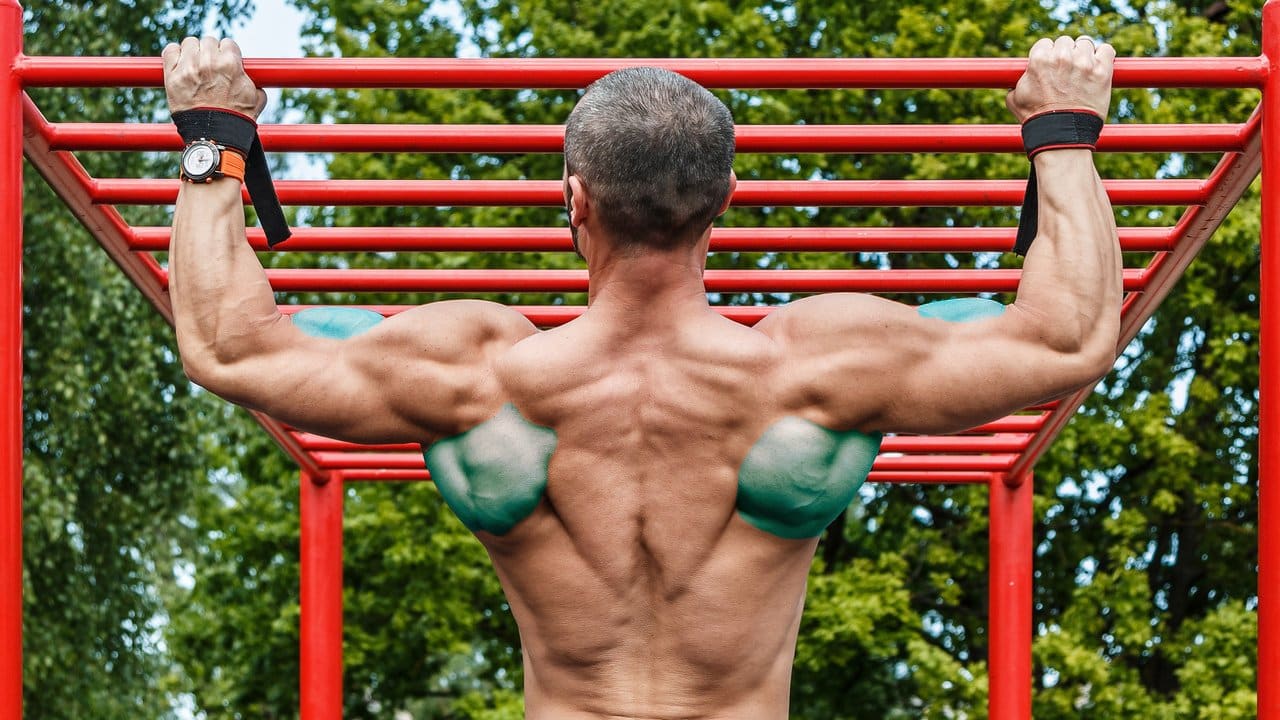Dive into my essential guide to sculpting your back and biceps. Gain a deep understanding of the anatomy and strategic exercises designed to maximize muscle growth and strength.
Uncover the roles of key muscles like the trapezius, latissimus dorsi, and biceps brachii, and learn how they contribute to your overall physique and performance.
From foundational movements like pull-ups and deadlifts to advanced techniques and workout plans, this article is your blueprint to achieving that coveted V-shaped torso and powerful arms.
Let’s get to it.
Jump to:
Understanding the Muscles
Back and Biceps Anatomy
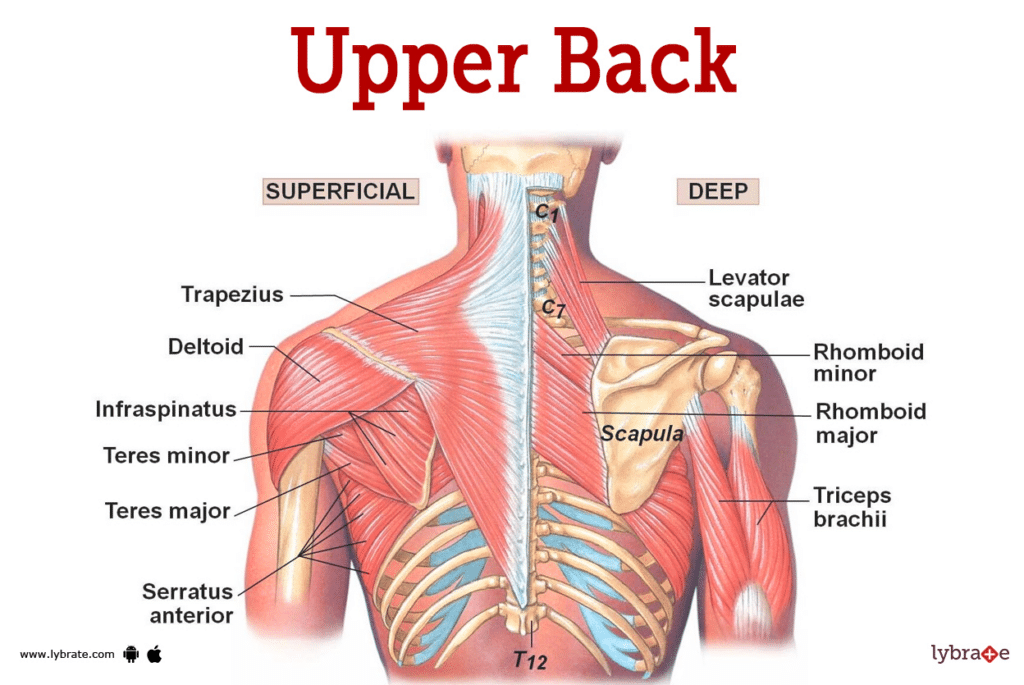
Trapezius: Often referred to as “traps,” these muscles span the neck, shoulders, and mid-back. They play a pivotal role in shrugging, neck movements, and scapular movement, crucial for pulling exercises.
Latissimus Dorsi (Lats): These broad muscles cover the lower back and are essential for achieving that coveted V-shaped torso. They’re engaged in movements that involve pulling the arm down towards the pelvis.
Spinal Erectors: Running along the spine, these muscles support posture and allow for bending and twisting movements. Strong spinal erectors are vital for maintaining form during lifts.
Rhomboids: Located between the shoulder blades, rhomboids are key in retracting the scapula. Strengthening these muscles contributes to a strong, stable upper back.
Rear Deltoids: Part of the shoulder muscle group, the rear deltoids are involved in horizontal abduction. They’re essential for balanced shoulder development and effective back workouts.
Biceps Anatomy
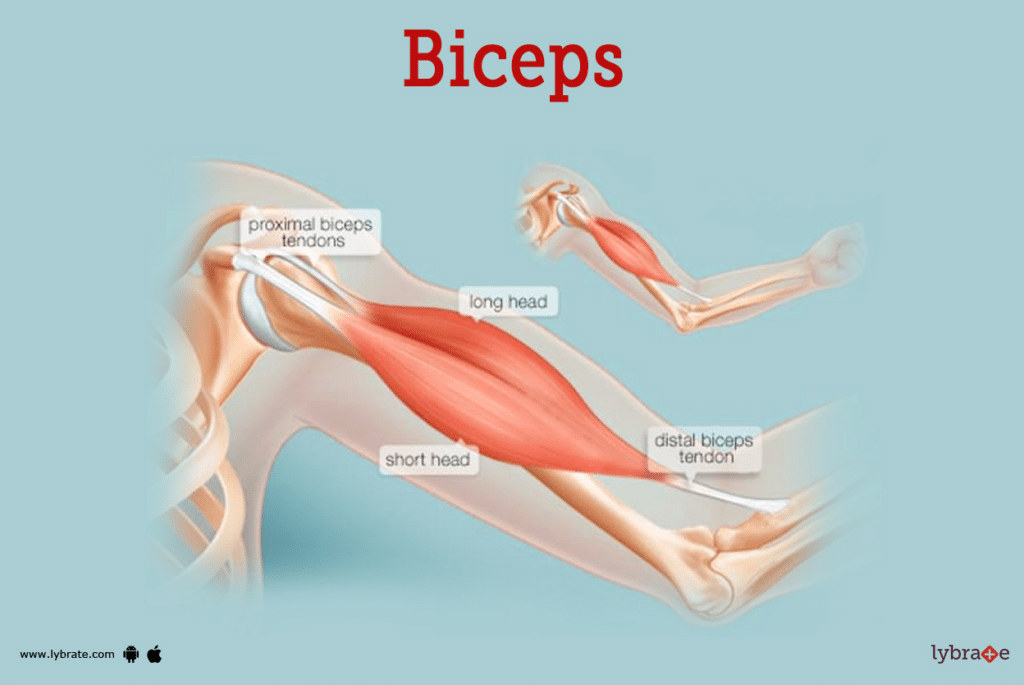
Short Head: This inner portion of the biceps brachii is more visible from the front. It plays a significant role in the arm’s flexion and adds to the arm’s overall thickness.
Long Head: The outer portion of the biceps, the long head, is crucial for the bicep peak. It works alongside the short head in flexing the elbow but also assists with shoulder elevation.
Back and Bicep Training
Let’s dive into the core exercises that promise to shape these areas effectively, followed by insights on how to structure your workouts for maximum gains.
For Back Development:
- Pull-Ups: An unparalleled exercise for widening the lats and engaging the entire back.
- Deadlifts: Not just for powerlifters, deadlifts target the lower back, traps, and even the lats.
- Bent-Over Rows: Perfect for adding thickness to your back, focusing on the rhomboids and lats.
- T-Bar Rows: Hits the middle back, offering a unique angle for muscle engagement.
- Lat Pulldowns: Ideal for those working up to pull-ups, ensuring lat activation.
For Bicep Growth:
- Barbell Curls: The cornerstone of bicep development, targeting both the long and short head.
- Hammer Curls: Focuses on the brachialis and brachioradialis, enhancing arm girth.
- Preacher Curls: Isolates the biceps, minimizing momentum for pure muscle work.
- Incline Dumbbell Curls: Stretches the biceps at the bottom, intensifying the growth stimulus.
- Concentration Curls: Perfect for peak contraction, emphasizing the mind-muscle connection.
Training Volume and Intensity
Volume:
- Beginners should aim for 3-4 exercises per muscle group, allowing for a comprehensive workout without overtraining.
- Intermediate and advanced lifters can handle 4-6 exercises, depending on their recovery capabilities and training split.
Intensity:
- Sets: Aiming for 3-5 sets per exercise strikes a balance between stimulating muscle growth and preventing overtraining.
- Reps: For hypertrophy (muscle growth), 8-12 reps per set is the sweet spot. This range challenges the muscles with enough weight while allowing for volume accumulation.
Workout Preparation
How To Stretch Before Doing Back and Bis
Preparing your body for a vigorous back and biceps workout is crucial for performance enhancement and injury prevention. A dynamic warm-up combined with targeted stretching can significantly improve your range of motion and activate the muscle groups you’re about to train. Here’s a guide to get you started:
Dynamic Shoulder Circles: Stand with your feet shoulder-width apart, extend your arms parallel to the floor, and make large, controlled circles. This warms up the shoulder joints, which are heavily involved in back and bicep exercises. Perform 10 circles forward, then 10 backward.
Arm Swings: Keep your feet planted as before, but this time swing your arms open wide and then cross them in front of your chest. This exercise increases blood flow to your upper body and stretches the chest and biceps. Repeat for 30 seconds.
Band Pull-Aparts: With a resistance band held in both hands in front of you, arms extended at chest level, pull the band apart while squeezing your shoulder blades together. Release back with control. This move primes the rhomboids and rear deltoids for rows and pull-ups. Aim for 15 reps.
Cat-Cow Stretch: On all fours, alternate between arching your back towards the ceiling (cat) and dipping it towards the floor (cow). This spinal articulation gets your back muscles ready for action. Perform 10 cycles.
Bicep Stretch: Extend one arm straight out in front of you, palm facing up. With your other hand, gently press down on the fingers of the extended hand, stretching the bicep. Hold for 20-30 seconds, then switch arms.
Wrist Flexor and Extensor Stretches: Since your wrists play a significant role in bicep and back exercises, it’s essential to warm them up. Extend one arm in front of you, palm facing down. Gently pull the fingers back towards your body with your other hand to stretch the wrist extensors. For the flexors, face your palm upwards and gently pull the fingers back. Hold each stretch for 20-30 seconds on each arm.
Comprehensive Workout Plans

Embarking on a fitness journey with a focus on back and biceps requires a roadmap that caters to all levels of experience. From those just starting out to seasoned gym-goers looking to refine their technique, here are workout plans and exercise guides to build strength, size, and definition.
Beginner Back and Biceps Workout
Option A:
- Lat Pulldowns – 3 sets of 10-12 reps
- Seated Cable Rows – 3 sets of 10-12 reps
- Dumbbell Curls – 3 sets of 12-15 reps
- Hammer Curls – 3 sets of 12-15 reps
Option B:
- Assisted Pull-Ups – 3 sets of 8-10 reps
- Bent-Over Dumbbell Rows – 3 sets of 10-12 reps
- Barbell Curls – 3 sets of 12-15 reps
- Preacher Curls – 3 sets of 12-15 reps
Advanced Back and Biceps Workout
Option A:
- Pull-Ups – 4 sets to failure
- T-Bar Row – 4 sets of 8-10 reps
- Single-Arm Dumbbell Row – 4 sets of 8-10 reps per arm
- Barbell Curl – 4 sets of 8-10 reps
- Concentration Curls – 4 sets of 10-12 reps
Option B:
- Deadlifts – 4 sets of 6-8 reps
- Wide-Grip Lat Pulldown – 4 sets of 8-10 reps
- Seated Cable Rows with a Wide Grip – 4 sets of 8-10 reps
- Hammer Curls – 4 sets of 8-10 reps
- Incline Dumbbell Curls – 4 sets of 10-12 reps
At-Home Back and Biceps Workout
- Bodyweight Rows (using a sturdy table) – 3 sets of 8-12 reps
- Pull-Ups (if you have a bar) – 3 sets to failure
- Dumbbell Curls – 3 sets of 12-15 reps
- Hammer Curls with Dumbbells – 3 sets of 12-15 reps
Detailed Exercise Instructions
Pull-Ups / Lat Pulldowns

- Grip the bar slightly wider than shoulder-width. For pull-ups, pull your body up until your chin is over the bar. For lat pulldowns, pull the bar down to your upper chest. In both exercises, focus on using your lats to initiate the movement.
Barbell Row

- Bend over at the waist with knees slightly bent, holding the barbell with an overhand grip. Pull the bar towards your lower chest, keeping your back straight. Lower with control.
Seated Cable Rows
- Sit at a cable row machine, feet braced. Grab the handle with both hands. Pull towards your waist while squeezing your shoulder blades together. Return with control.
Dumbbell Shrug
- Stand holding dumbbells at your sides. Shrug your shoulders up towards your ears, hold briefly, then lower back down.
Back Extensions
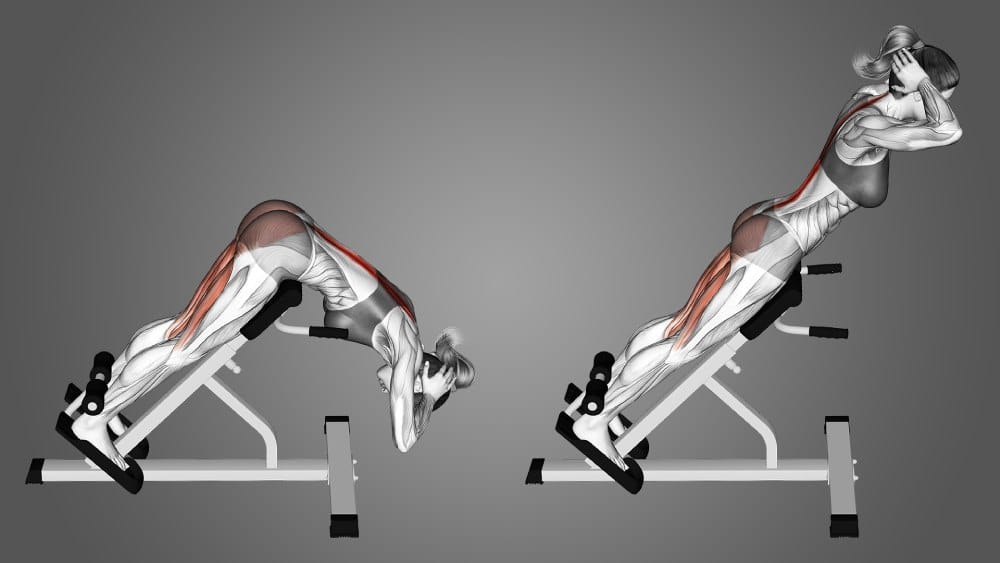
- Position yourself in a back extension station. Cross your arms over your chest or place behind your head. Lower your upper body down then lift by extending your back, not your hips.
Barbell Curl
- Hold a barbell with an underhand grip, arms extended. Curl the bar towards your chest, keeping your elbows close to your body. Lower with control.
Hammer Curl
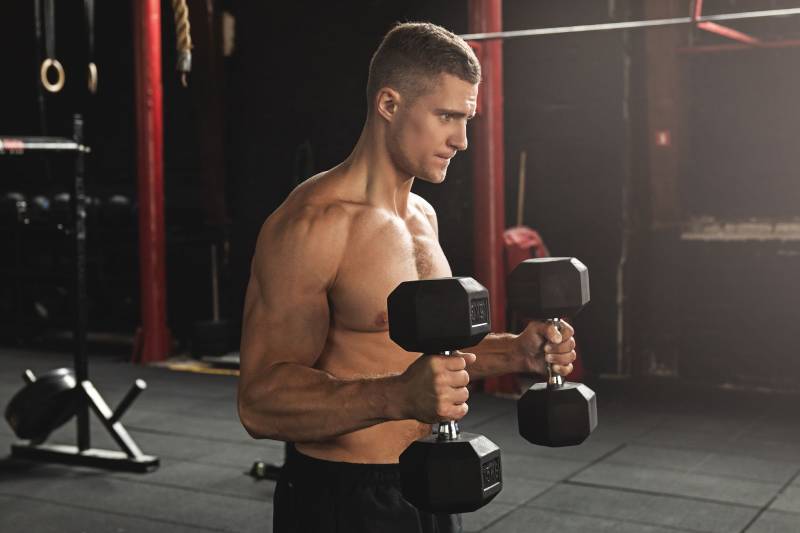
- Hold dumbbells at your sides, palms facing each other. Curl the weights up while keeping your palms facing inward. Lower back down with control.
Preacher Curl
- Sit at a preacher bench, holding a barbell or dumbbells with an underhand grip. Curl the weight up, then lower back down with control. Focus on isolating the biceps throughout the movement.
Advanced Training Techniques
Workout Routine (9 Exercises)
Elevate your back and bicep training with a comprehensive workout routine designed to challenge your muscles and stimulate growth. This routine incorporates a mix of compound and isolation exercises, ensuring a well-rounded approach to muscle development.
- Deadlift – 4 sets of 6 reps: The ultimate compound exercise, engaging the entire back, glutes, and hamstrings.
- Pull-Ups – 3 sets to failure: Focus on wide grip to emphasize lat width.
- T-Bar Row – 3 sets of 8 reps: Targets the middle back, providing thickness.
- Single-Arm Dumbbell Row – 3 sets of 10 reps per arm: Isolates each side, ensuring balanced development.
- Face Pulls – 3 sets of 12 reps: Excellent for rear deltoids and upper back.
- Barbell Curl – 3 sets of 8 reps: Classic bicep builder.
- Incline Dumbbell Curl – 3 sets of 10 reps: Stretches the biceps, promoting growth.
- Hammer Curl – 3 sets of 12 reps: Targets the brachialis, enhancing arm thickness.
- Concentration Curl – 3 sets of 15 reps: Isolates the bicep peak, perfect as a finisher.
Utilizing Supersets and Training Splits
Supersets: To maximize efficiency and intensity, incorporate supersets into your back and biceps workouts. This involves performing two exercises back-to-back with minimal rest, such as a back exercise followed by a bicep exercise. For example, pair pull-ups (back) with barbell curls (biceps) to keep the muscles under tension and increase the workout’s metabolic demand.
Training Splits: Integrating back and biceps workouts into a pull-push-legs (PPL) structure optimizes recovery and muscle growth by grouping muscle groups based on their function. For the pull day, focus on back and biceps along with rear deltoids. This allows for adequate rest between workouts, as these muscle groups will not be directly targeted on push or leg days.
Beginners might start with a simpler split, training three days a week, focusing on full-body workouts that incorporate elements of the back and biceps routine.
Advanced lifters can benefit from a more frequent PPL routine, hitting each muscle group twice a week with increased volume and intensity. This approach allows for dedicated sessions with a focus on progressive overload and technique refinement.



